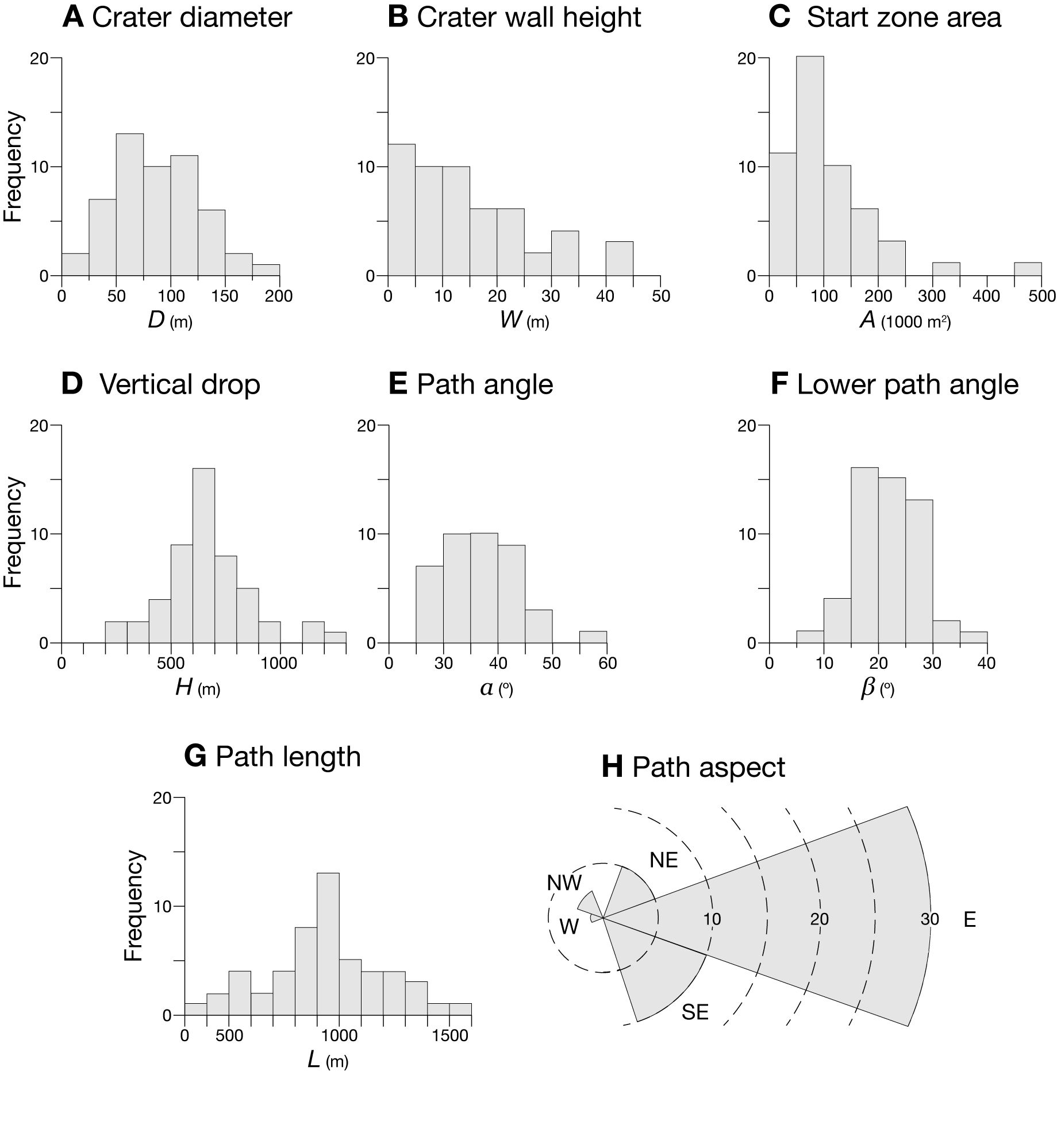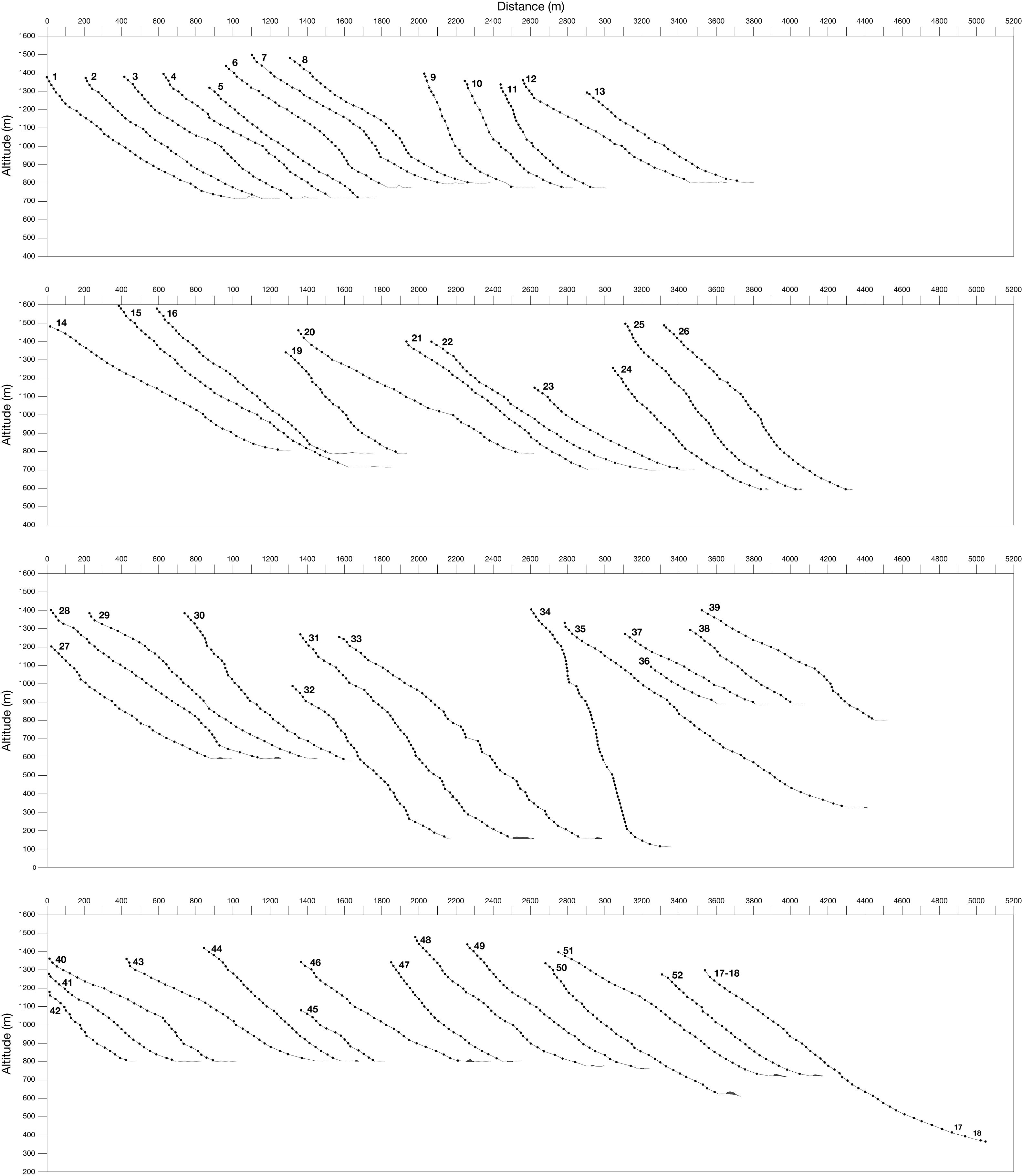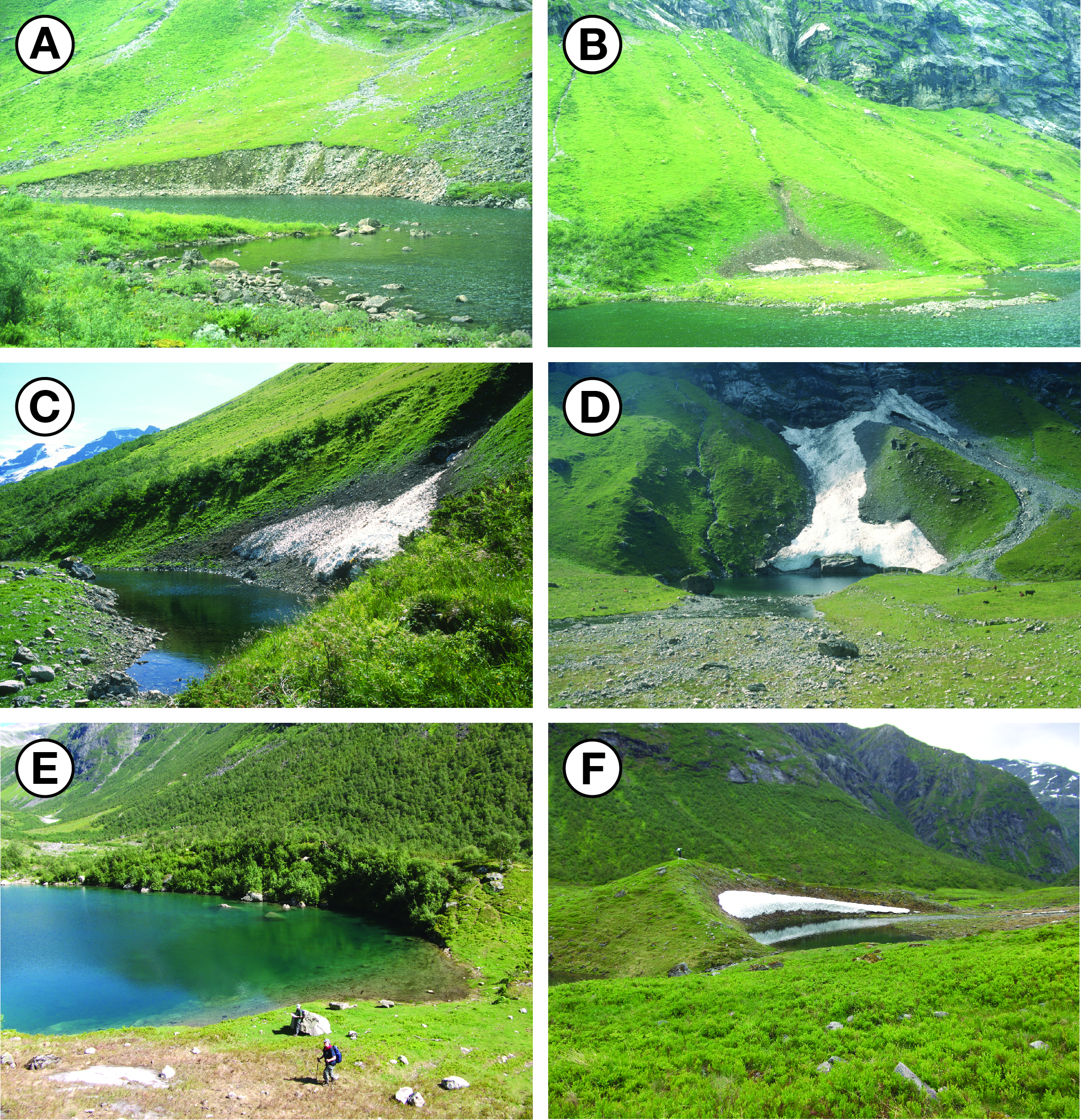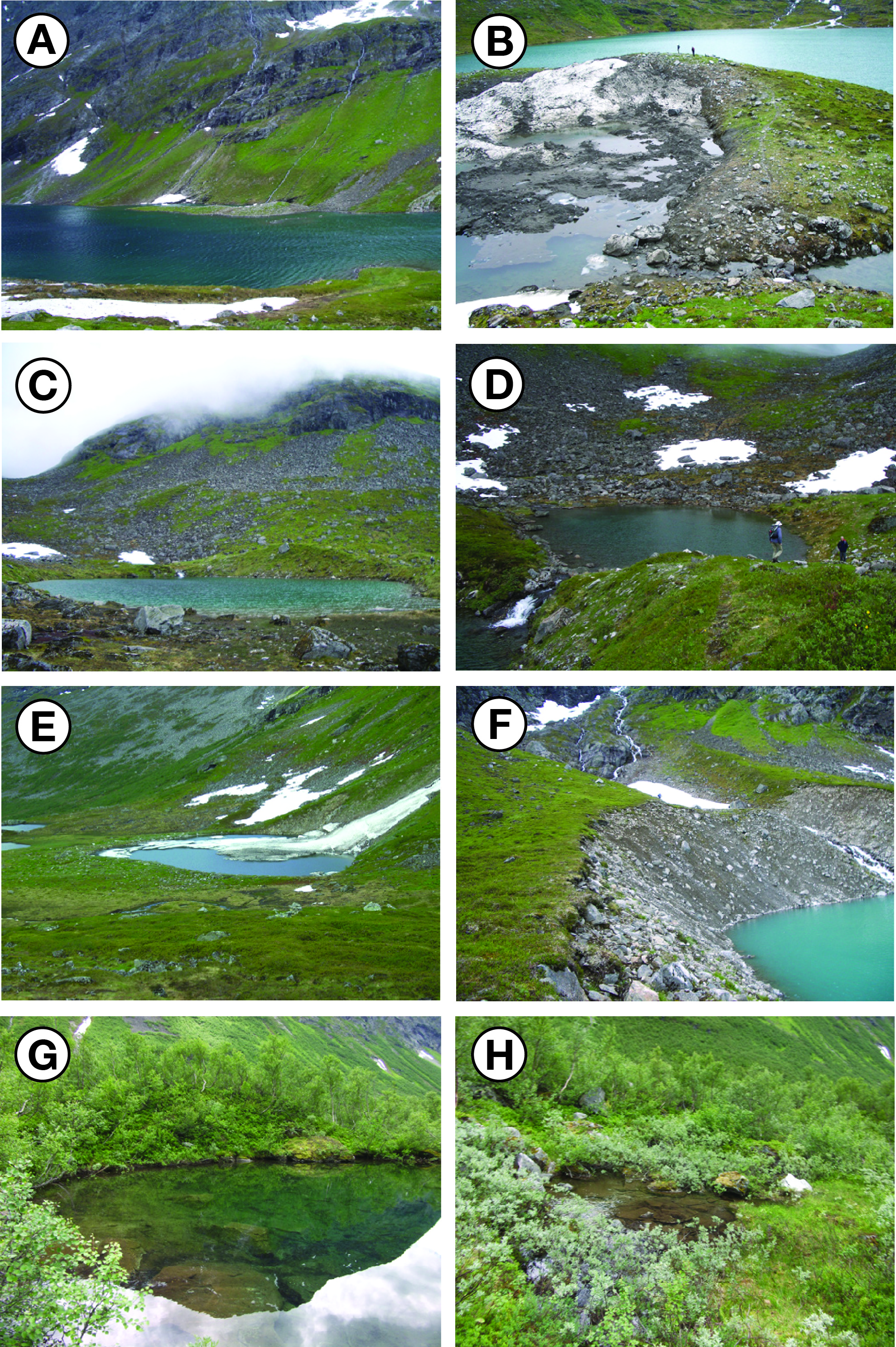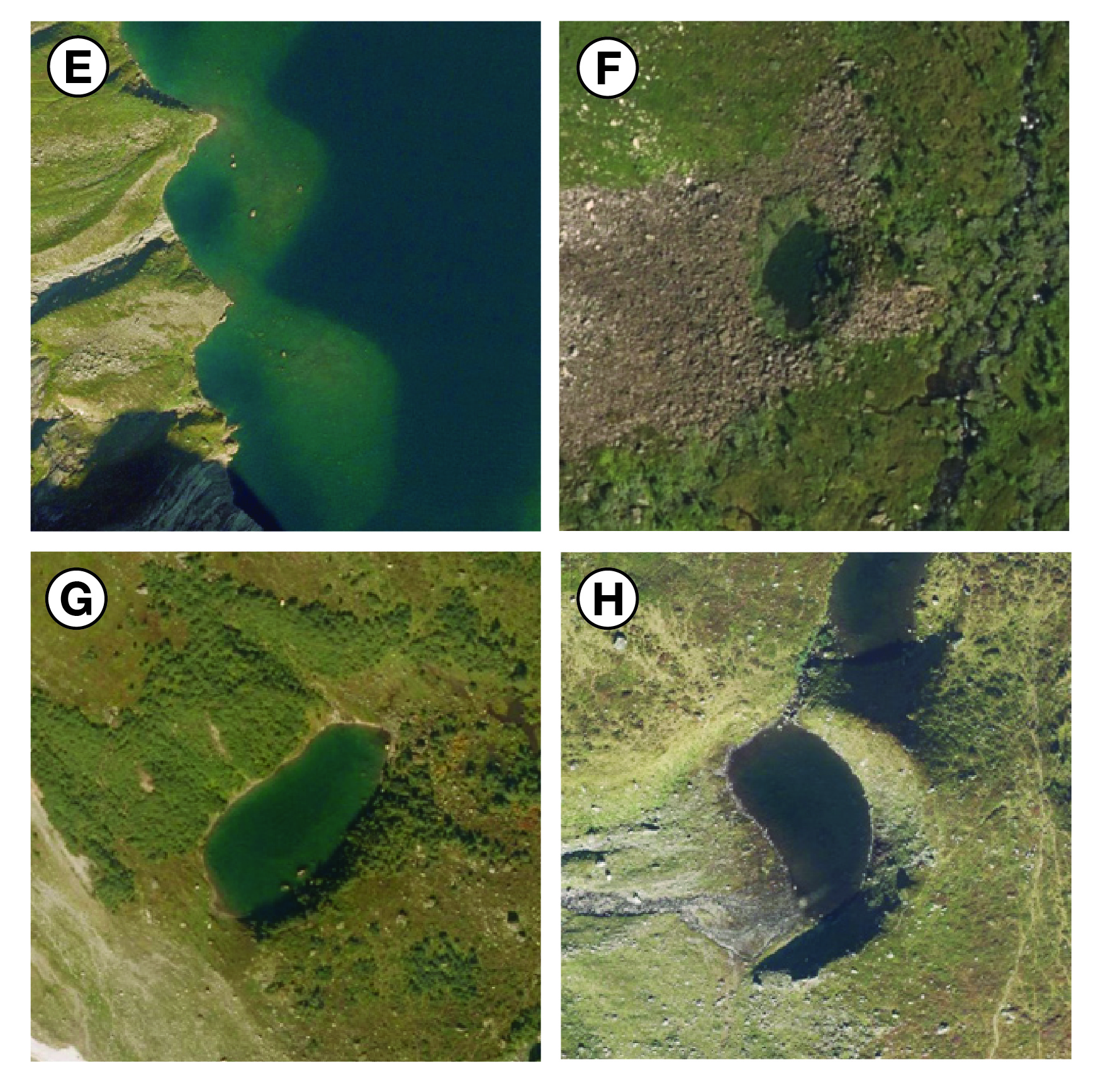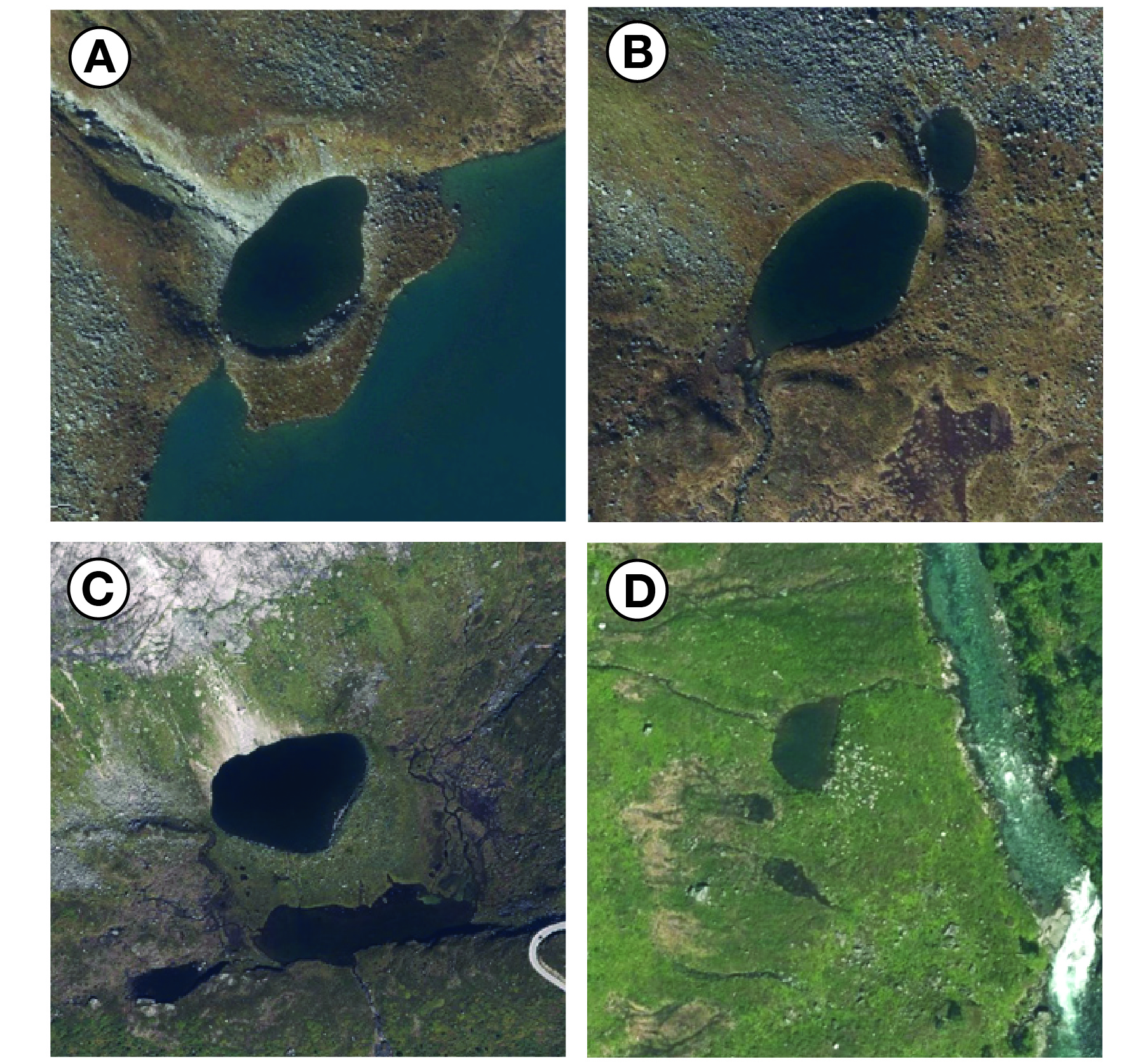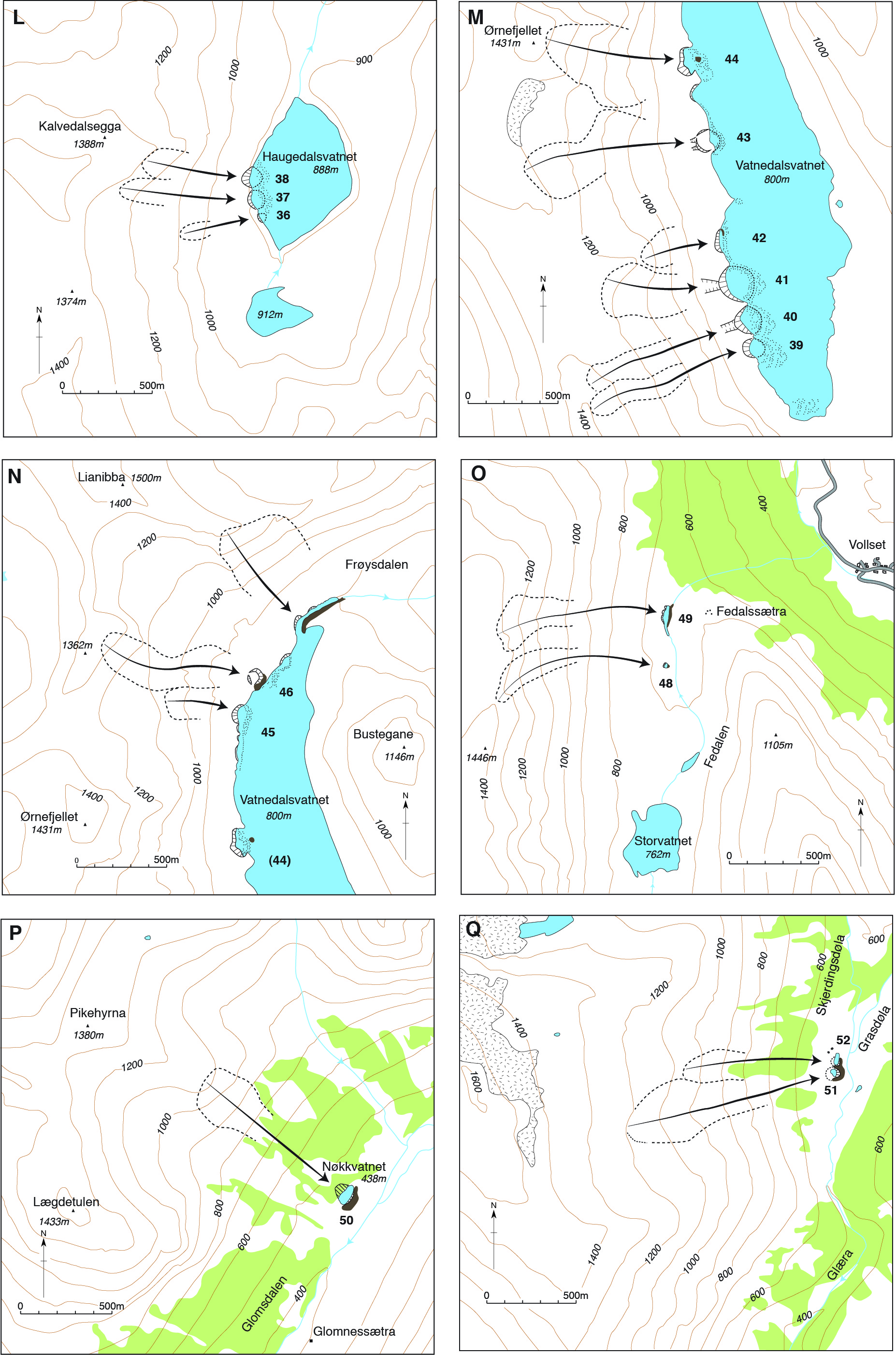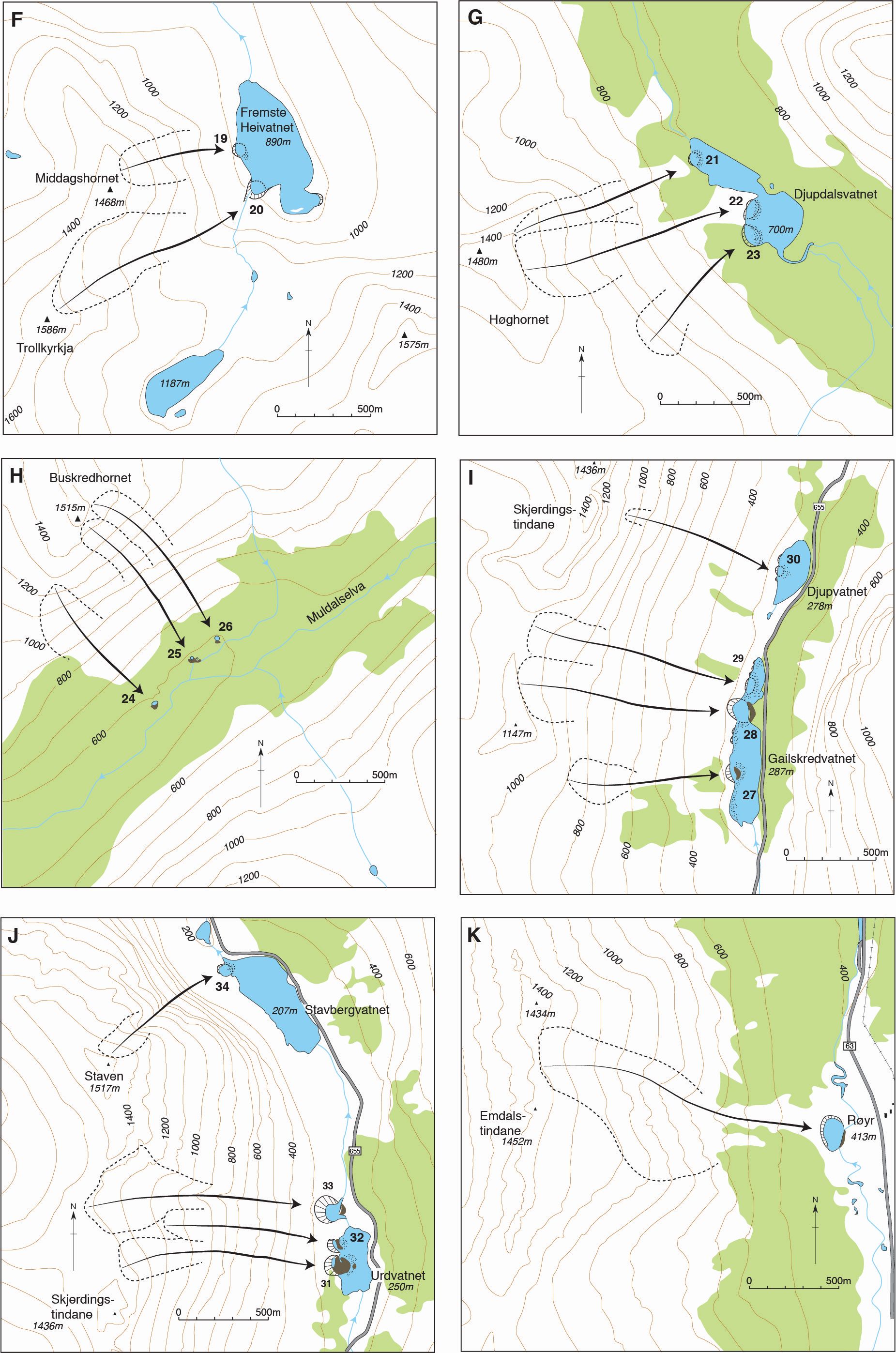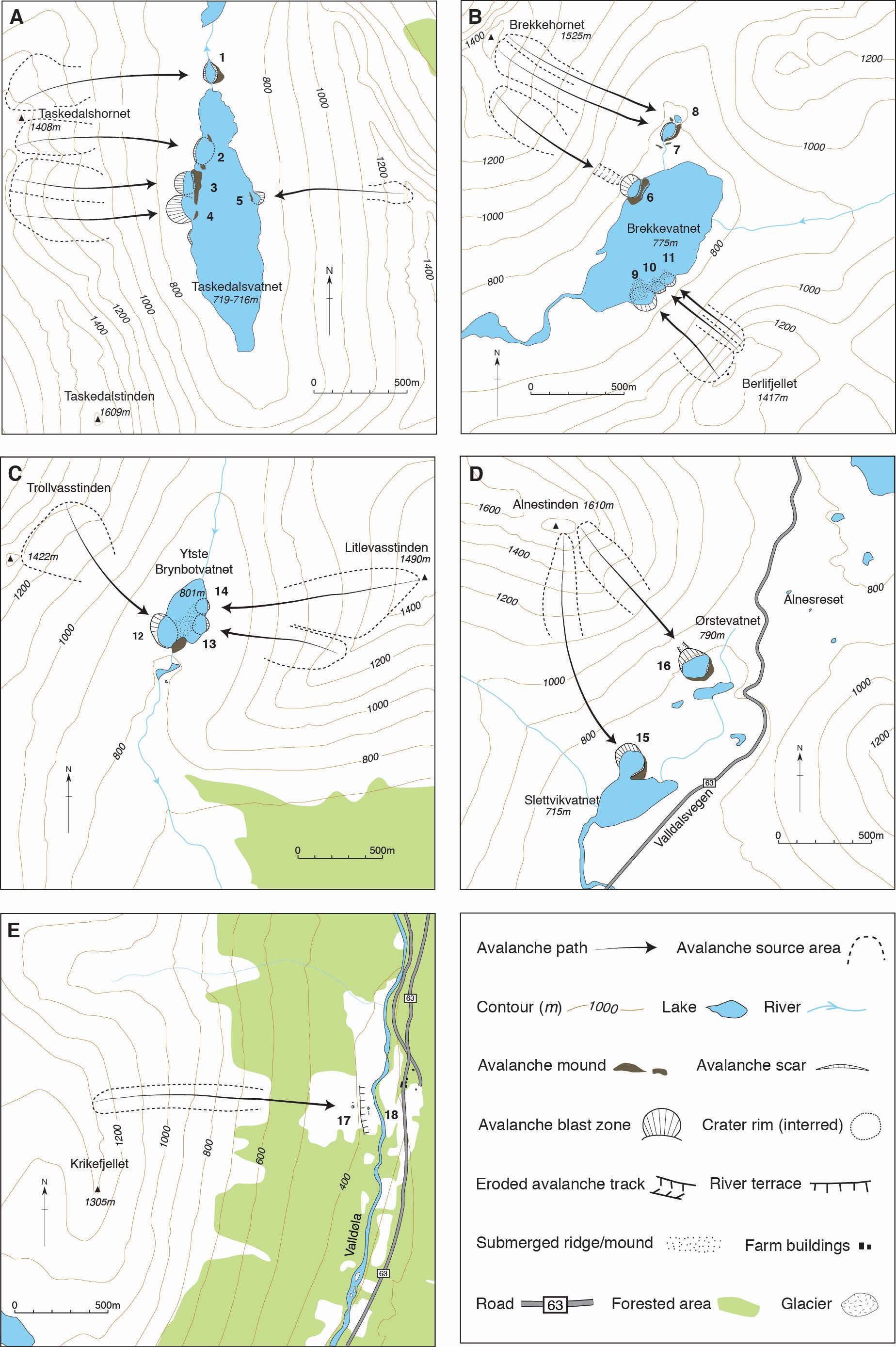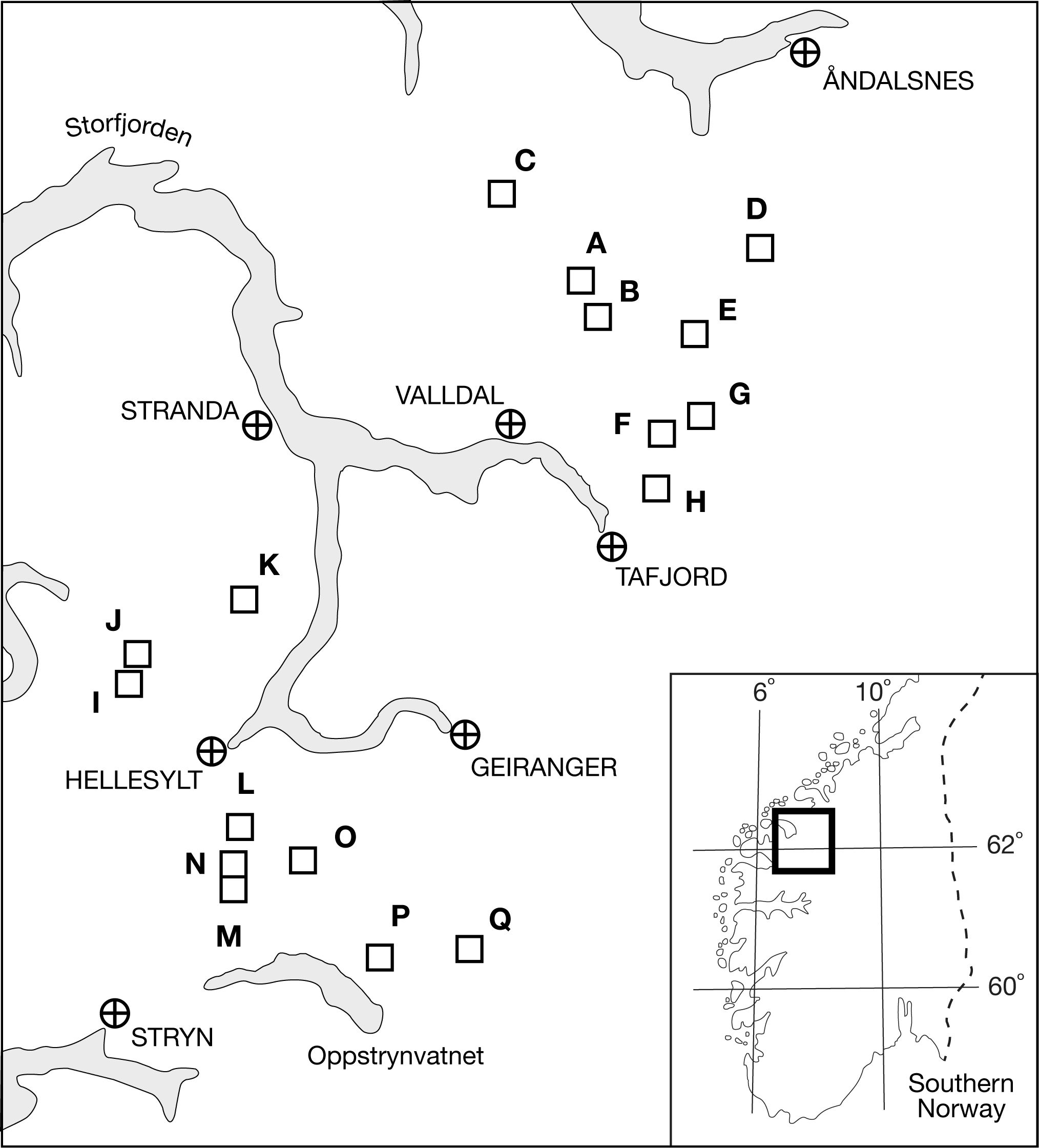Richard A. Shakesby
Snow-avalanche impact craters in southern Norway: Their morphology and dynamics compared with small terrestrial meteorite craters
Shakesby, Richard A.; Matthews, John A.; Vater, Amber E.; Owen, Geraint; McEwen, Lindsey; Hill, Jennifer; Ratcliffe, Anna
Authors
John A. Matthews
Amber E. Vater
Geraint Owen
Lindsey McEwen Lindsey.Mcewen@uwe.ac.uk
Professor in Environmental Management
Jenny Hill Jennifer.Hill@uwe.ac.uk
Associate Professor in Teaching and Learning
Anna Ratcliffe
Abstract
© 2017 Elsevier B.V. This regional inventory and study of a globally uncommon landform type reveals similarities in form and process between craters produced by snow-avalanche and meteorite impacts. Fifty-two snow-avalanche impact craters (mean diameter 85 m, range 10–185 m) were investigated through field research, aerial photographic interpretation and analysis of topographic maps. The craters are sited on valley bottoms or lake margins at the foot of steep avalanche paths (α = 28–59°), generally with an easterly aspect, where the slope of the final 200 m of the avalanche path (β) typically exceeds ~ 15°. Crater diameter correlates with the area of the avalanche start zone, which points to snow-avalanche volume as the main control on crater size. Proximal erosional scars (‘blast zones’) up to 40 m high indicate up-range ejection of material from the crater, assisted by air-launch of the avalanches and impulse waves generated by their impact into water-filled craters. Formation of distal mounds up to 12 m high of variable shape is favoured by more dispersed down-range deposition of ejecta. Key to the development of snow-avalanche impact craters is the repeated occurrence of topographically-focused snow avalanches that impact with a steep angle on unconsolidated sediment. Secondary craters or pits, a few metres in diameter, are attributed to the impact of individual boulders or smaller bodies of snow ejected from the main avalanche. The process of crater formation by low-density, low-velocity, large-volume snow flows occurring as multiple events is broadly comparable with cratering by single-event, high-density, high-velocity, small-volume projectiles such as small meteorites. Simple comparative modelling of snow-avalanche events associated with a crater of average size (diameter 85 m) indicates that the kinetic energy of a single snow-avalanche impact event is two orders of magnitude less than that of a single meteorite-impact event capable of producing a crater of similar size, which is consistent with the incremental development of snow-avalanche impact craters through the Holocene.
| Journal Article Type | Article |
|---|---|
| Acceptance Date | Aug 21, 2017 |
| Online Publication Date | Aug 30, 2017 |
| Publication Date | Nov 1, 2017 |
| Deposit Date | Aug 29, 2017 |
| Publicly Available Date | Aug 30, 2018 |
| Journal | Geomorphology |
| Print ISSN | 0169-555X |
| Publisher | Elsevier |
| Peer Reviewed | Peer Reviewed |
| Volume | 296 |
| Pages | 11-30 |
| DOI | https://doi.org/10.1016/j.geomorph.2017.08.041 |
| Keywords | snow avalanche impact craters, crater formation, impact processes, meteorite craters, kinetic energy, southern Norway |
| Public URL | https://uwe-repository.worktribe.com/output/878990 |
| Publisher URL | https://doi.org/10.1016/j.geomorph.2017.08.041 |
| Contract Date | Sep 6, 2017 |
Files
CRATERS fig 8.jpg
(167 Kb)
Image
CRATERS fig 7.jpg
(515 Kb)
Image
CRATERS fig 6 A-F Colour.jpg
(9.9 Mb)
Image
CRATERS Old fig 5 A-H Colour.jpg
(8.7 Mb)
Image
CRATERS fig 4 E-H colour.jpg
(3.5 Mb)
Image
CRATERS fig 4 A-D Colour.jpg
(3.8 Mb)
Image
CRATERS fig 3 L-Q Colour.jpg
(3.3 Mb)
Image
CRATERS FIG 3 F-K Colour.jpg
(656 Kb)
Image
CRATERS fig 3 A-E with key Colour.jpg
(586 Kb)
Image
CRATERS fig 2.tif
(306 Kb)
Other
CRATERS fig 1.jpg
(205 Kb)
Image
CRATERS - main text revised - clean copy.pdf
(736 Kb)
PDF
CRATERS - main text revised - clean copy.doc
(373 Kb)
Document
You might also like
Developing self-authorship through participation in student research conferences
(2015)
Presentation / Conference Contribution
Understanding tourist encounters with nature: a thematic framework
(2013)
Journal Article
Downloadable Citations
About UWE Bristol Research Repository
Administrator e-mail: repository@uwe.ac.uk
This application uses the following open-source libraries:
SheetJS Community Edition
Apache License Version 2.0 (http://www.apache.org/licenses/)
PDF.js
Apache License Version 2.0 (http://www.apache.org/licenses/)
Font Awesome
SIL OFL 1.1 (http://scripts.sil.org/OFL)
MIT License (http://opensource.org/licenses/mit-license.html)
CC BY 3.0 ( http://creativecommons.org/licenses/by/3.0/)
Powered by Worktribe © 2025
Advanced Search

